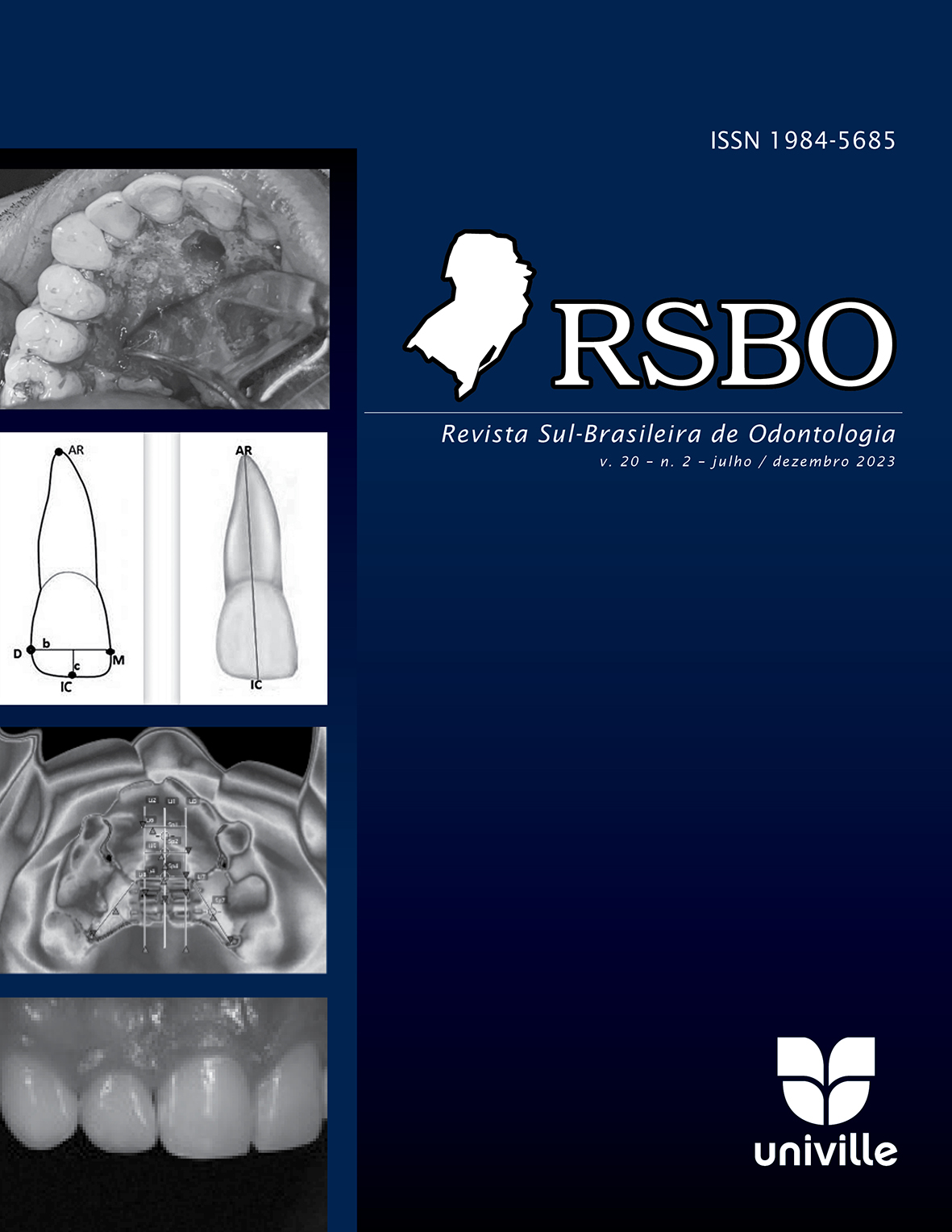Provisional rehabilitation using temporary anchorage device (mini-implant) in adolescent patients with hypodontia
DOI:
https://doi.org/10.21726/rsbo.v20i2.2126Palavras-chave:
hypodontia; rehabilitation; adolescent patients.Resumo
Hypodontia presents a significant challenge when managing dental rehabilitation in adolescent patients. The lack of definitive treatment options during this developmental stage necessitates the exploration of provisional alternatives that provide satisfactory esthetic and functional outcomes. This article aims to showcase a technique for provisional rehabilitation using a temporary anchorage device, specifically a mini-implant, in the context of hypodontia in adolescents. Materials and methods: A 14-year-old patient with hypodontia was selected for this case report. The missing tooth, tooth 12, was replaced with a mini-implant for provisional rehabilitation. The installation procedure and subsequent follow-up evaluations were documented through tomography. Results: Imaging follow-up demonstrated a slight reduction in alveolar bone thickness; however, the overall height of the bone remained well-maintained. This finding suggests that the technique employed in this case offers promising results in terms of preserving alveolar bone integrity during the provisional rehabilitation phase. Conclusion: The presented technique provides both patient comfort and practicality. Moreover, it offers the added advantage of maintaining alveolar bone height, thus serving as a potential alternative to current rehabilitative interventions. Further research and long-term studies are warranted to validate these findings and establish its efficacy in a larger patient population.

